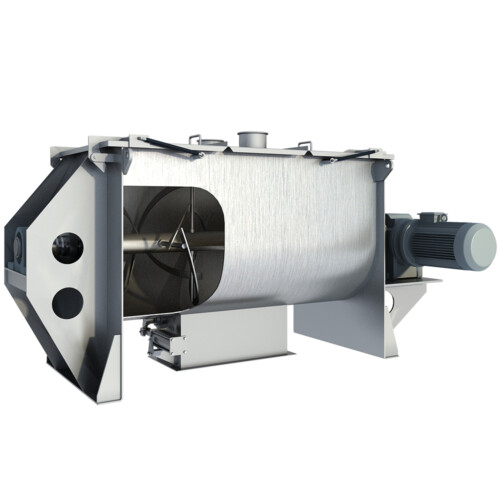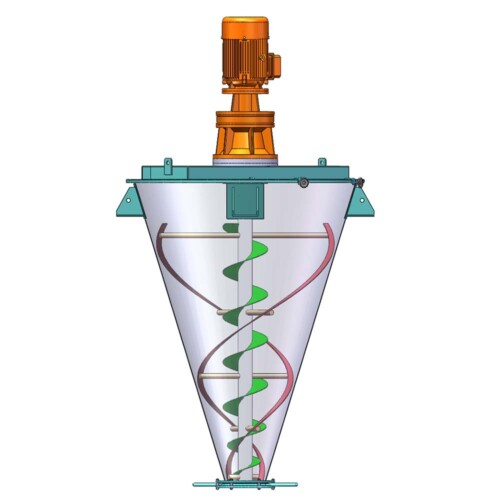Ask An Expert
Frequently Asked Questions
Yes, We can supply simple stand alone panels or automated PLC controlled systems. We normally install and test all controls on our mixers before they are shipped.
Yes, we normally test the mixers before they are shipped and mark out the wire need to connect on the control box.
We manufacture specialty mixing equipment for powder & bulk materials. Included are ribbon blender, plough mixer, conical screw mixer, twin shaft paddle mixer, V blender, double cone blender and other auxiliary equipment such as screw conveyor, quantitive auger filler.
We sell across the world, our cusotmers distribute 5 continents.
Share Us With Your Network
Chemical mixing machine, chemical mixing solutions
- Abrasives – products developed to shape and finish surfaces in various applications including woodworking, autobody painting & repair, construction, personal products, etc. Typically, materials used as abrasives are either hard minerals (rated at 7 or above on Mohs scale of mineral hardness) or synthetic stones. Softer minerals like calcium carbonate are used as abrasives, such as “polishing agents” in toothpaste. Vortex Blenders efficiently mix, coat or vacuum dry abrasive powders. Our Multi-Shaft Mixers are suitable for preparing binder solutions for abrasives formulations.
- Asphalts – Modified asphalt is a blend of asphalt (bitumen) and fillers, such as calcium carbonate, and then modified by a polymer such as SBS rubber (styrenebutadiene-styrene block copolymer) or APP (atactic polypropylene). These polymers are often in pellet or crumb form and require very high shear conditions to soften and dissolve them into the asphalt at temperatures from 350 to 400F. The polymer modification gives the usually brittle asphalt improved mechanical characteristics such as tensile strength, elastic modulus and freeze/thaw stability – all are important factors for road paving applications. The processing of polymer modified asphalt using the Vortex Inline High Shear Mixer has been proven to be successful and is also applicable to other industries such as roofing and gasket manufacture.
- Chlorinated Organics – key ingredients in a wide variety of end products including paints and coatings, adhesives, pharmaceuticals, aerosols, dry-cleaning agents, degreasing solvents, etc. A Vortex customer offloads chlorinated hydrocarbon slurry from railcars and trucks. During transport some solids settle and agglomerate. The slurry is fed at 10 to 30 gpm to reactors that operate with 1/4″ nozzles. In the past they used centrifugal pumps to offload this slurry. In an attempt to break down the solids, they recirculated the solution through the pumps — obviously a waste of time and energy, and a purpose for which centrifugal pumps are not well suited. The solids still ended up plugging the reactor nozzles. Installation of several Model HSM-401 Horizontal Inline High Shear Mixers solved the problem. Agglomerates that can potentially clog the reactor nozzles are broken down as they pass through the rotor/stator interface. The presence of chlorine necessitated Hastelloy C materials.
- Coal Suspensions – In the processing of synfuel, powdered coal is combined with oil that is fed into the furnaces of large power plants.Inline High Shear Mixers have been proven very effective in this area. Also, our vacuum Double Planetary Mixers are ideal for drying coal and recovering solvents. The dried coal is used for making fire-resistant insulation boards and ablative coatings on aircrafts.
- Epoxy Hardeners – The building blocks of epoxy adhesives are essentially five: epoxy resins, hardeners, accelerators, fillers and additives. Cure is generally achieved using hardeners (co-polymerization). Hardeners then fall into two big categories: the ones for two-part epoxies which cure at room temperature, and the ones for one-part epoxies which require a form of energy to start the reaction (heat, light etc.). Common hardeners are polyamines, polyamides and polymercaptanes. In terms of performance, each hardener provides specific properties to the product. For example, polymercaptanes are generally used to cure the resin very quickly, polyamines to give high performance and polyamides for good adhesion, flexibility, relative insensitivity to mix ratio, and good health & safety classification. “Five minutes epoxies” which have 3 – 6 minutes of pot life generally contain polymercaptane hardeners. High temperature two-part resins, which are characterized by superior resistance to thermal environments, often contain polyamine adducts. A 1000-gal VersaMix services one of the biggest epoxy hardener production plants in the world.
- Fertilizers – Inline High Shear Mixers with Solids/Liquid Injection Manifold (SLIM) are installed and successfully operated in fertilizer production plants for introducing solids into low-viscosity fluids such as induction of silicon dioxide (diatomaceous earth) into phosphoric acid for stripping of fluorine.
- Flotation Reagents – Flocculants are chemicals that are specifically designed to form agglomerations, usually in an aqueous medium, such as wastewater. When the compound to be removed comes in contact with the flocculent, an agglomeration is formed. The resultant agglomerate can then be filtered and removed from the effluent stream. Two Vortex Inline Mixer Emulsifiers, Model HSM-4100 (100 HP) are in service at a client’s facilities, each producing 3000 gallon batches of polyelectrolyte-based flocculants. The manufacture of polyelectrolyte-based flocculants involves bringing together a 4-constituent aqueous phase with a 3-constituent oil phase. The two phases are introduced to the 3000 gallon tank. The batch is recirculated through the 100 HP mixer emulsifier, until complete – approximate batch time is 2.5 hours. When the batch is finished, the flocculant is again pumped through the Mixer Emulsifier, on its way to a storage vessel. The finished product is shipped to industrial and municipal wastewater treatment facilities via bulk tankers and also in 55-gallon drums. Application note: Both units referenced in this case history are reportedly working extremely well. They have been operating successfully for over 15 years.
- Lubricant Pastes and Oils – A manufacturer of oil-based lubricating grease is using asphaltic oil, to which they add organic acids and aluminum isopropoxide powder to thicken the oil into a grease product. Large turbine-agitated vessels were utilized to make this product, however the addition of AIP, which is a dusty solid, created an environmental issue. The Vortex inline SLIM offered them an improved way of introducing the AIP powders into heated asphaltic oil.
- Optical Brighteners – Cyanuric chloride, C3N3Cl3, is a key ingredient in Optical Brighteners. These find use in the textile industry for intensifying color in cotton and regenerated cellulosic fibers. The effect of optical brighteners is to absorb invisible UV-light and emit visible light primarily in the blue spectral range. Yellow or yellowish substrates appear whiter when more bluish light is emitted. In a customer’s expansion project, a 2,500-gallon Vortex VersaMix became the equipment of choice over their existing single shaft turbine-type mixers. The Three Wing Anchor of the VersaMix provides mass flow while the High Shear Mixer promotes deagglomeration and dispersion of solids. Lumps 100-200 microns in size must be broken apart. A single-blade mixer is inferior to the VersaMix because effective mixing would be confined to certain areas in the tank, especially for large batch volumes such as this one. A colorless crystal with pungent odor, C3N3Cl3 reacts violently with water producing cyanuric acid, hydrochloric acid and heat. Hence, the vessel is insulated and sheathed in stainless steel.
- Precious Metals – At some point in the manufacture of catalytic converters, a clean out is done whereby products are washed with water. Rinse water is recycled and stored due to the presence of precious metal residue. During storage the metal particles settle. A High Speed Disperser effectively agitates this soup, keeping the precious metals suspended and dispersed within the rinse water before it is sent to a drier. Metals recovery is critical because these catalysts are very expensive.
- Propellants – Planetary Mixers are widely used for making composite propellant pastes and slurries made from solid oxidizers such as ammonium perchlorate or ammonium nitrate, powdered metal fuel such as aluminum, rubber, cellulose, epoxy, and/or other fuel/binder compounds.
- PVB Emulsions – aqueous polyvinybutyral dispersions are used as decorative, protective or temporary coatings for paper, metal, wood or glass. A sample blend consists of viscous oil plasticizer, surfactant and powdered PVB polymer resin. Suitable equipment for this application are Kneader Extruders and Planetary Mixers.
- Technical Polymers – One customer, a multi-billion dollar chemical & pharmaceutical company, uses the Model VM-100 as a mixer/reactor in its R&D efforts to further broaden their range of high-performance polymers and meet the evolving needs of the market. Their resins are vacuum-formed, injection-molded or machined into products designed for a variety of demanding applications. Engineering polymers can be classified into two groups: amorphous and semicrystalline. Amorphous polymers are generally transparent, feature high dimensional stability, good chemical resistance and toughness. Semi-crystalline polymers are usually opaque and exhibit excellent fatigue resistance. Processing of engineering polymers requires high pressure and temperature, tightly sealed mixer/reactor vessels highly resistant to chemical degradation, jackets for optimum heat transfer, and clog-free discharge systems.
- Thermal Transfer Grease – used as heat transfer material in central processing units of computers, other appliances, and vehicles. A client used to make their greases in single planetary mixers without much efficiency. After addition of each ingredient, it was necessary to scrape the bottom and sides of the pot and the blades. For their formulation, excess heat must be avoided to prevent formation of formaldehyde, an unwanted by-product. Successful lab tests confirmed that the Vortex DPM with HV Blades is very appropriate for this application. The costumer was then able to optimize the packing fraction of the greases.


















